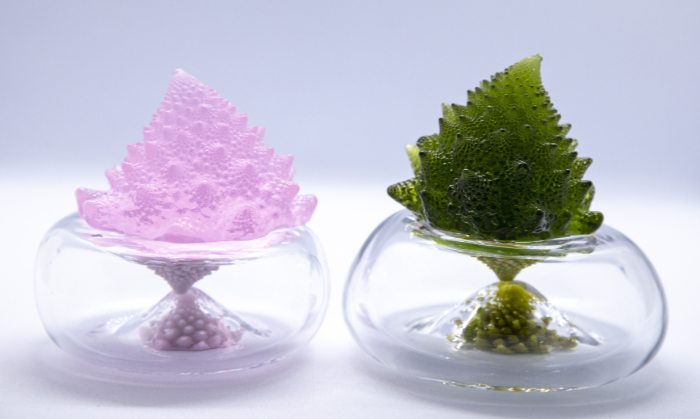
Maria Zulueta: Amanda Moriarty Prize report
One of the four winners of the latest CGS Amanda Moriarty Prize, Maria Zulueta, describes her five days experimenting with new directions in her glass work at Teign Valley Glass Studio. She split her residency time into two parts.
During the initial two days of the residency (2 and 3 December 2024), we explored and experimented with pâte de verre and printed goblets that I had fused previously, aiming to assess their compatibility. With the fused samples, I noticed no apparent COE stress in the glass, yet I remained concerned about how the glass was going to interact with the blown components and whether they would ultimately be compatible.
On the first day, we utilised the printed goblets to create rounded objects, incorporating various optical effects. We experimented with layered imagery, resulting in some pieces exhibiting remarkable internal and optical effects. Additionally, we integrated pâte de verre elements both within and around the transparent blown objects.
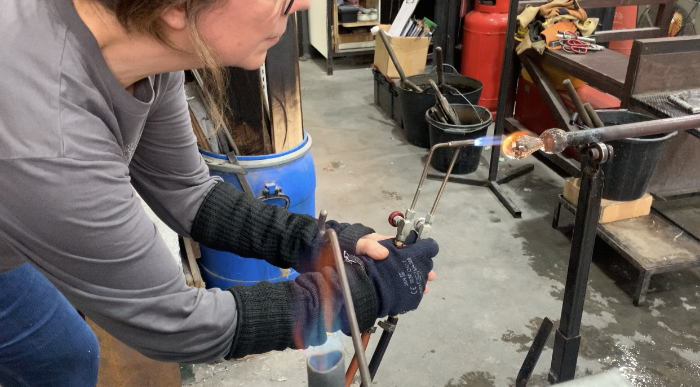
On the morning of the second day, I felt a sense of relief as the work had held together without cracking, and the outcomes appeared to be outstanding.
Our focus shifted towards utilising a larger cast in our sandcasting processes. We also incorporated a larger, textured surface made of pâte de verre, opting for white because of its inherent challenges during manipulation.
Unfortunately, the piece struggled to withstand the heat once we introduced clear, molten glass, leading to significant cracking. However, we managed to twist a section from the broken piece, which proved to be quite challenging. The results were a mix of cracks, yet with an interesting, internal twist. It became apparent that a larger kiln and slower ramp on the schedule would be beneficial for gradually heating the initial piece.
Additionally, we experimented with more inclusions and applied the pâte de verre onto the glass-blown surface. My observations indicated that powder frit performed better than fine frit, as it was denser and more compact. Some pieces flattened, losing the intricate details of the pattern.
Over the past year, I have been working on Romanesco vegetable-inspired objects, experimenting with freezing and varying temperatures without using moulds. I found that achieving the right balance is crucial to prevent excessive melting, especially when fusing the work using the heat from the glory hole. This ongoing experimentation is essential for refining the fractal surface details.
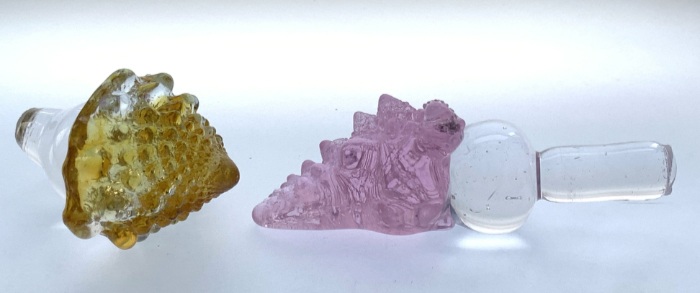
Reflecting on the production of these samples, I decided to focus on the surface structure to create at least two sculptural pieces for the final part of the residency when I returned in May 2025. This was a challenging decision, as I truly loved some of the samples achieved working with blown shapes and internal optical effects. However, I needed to be practical and aim for something polished and complete.
In preparation for this second stage, I worked on drawings that illustrated the shapes and colours I wished to achieve. Additionally, I fired more pâte de verre Romanesco pieces ready to bring for the concluding phase.
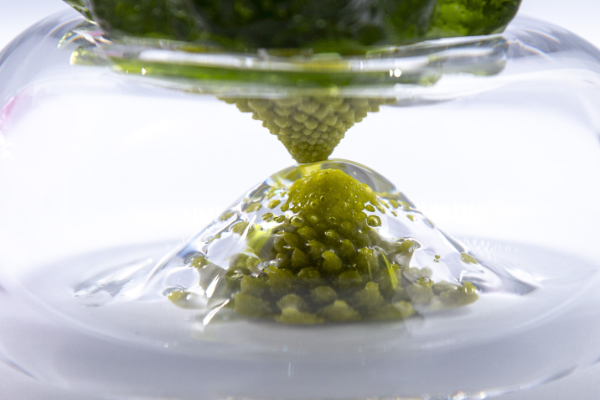
I was drawn to the Romanesco as the icon to use in my sculptural work as its natural geometry, with repeating patterns and intricate textures, seemed perfectly suited to this exploration. I wanted to capture not only its striking form but also the delicate surface details that make it so captivating. Much of my focus was on preserving this delicacy while pushing the material to new limits.
I had both amazing and challenging experiences during the residency, which opened up new avenues in my glass practice. It gave me the opportunity to explore how the blowing process could be combined with my familiar methods of casting and pâte de verre. Working in close collaboration with Lucy Richard, the glassblowing assistant at Teign Valley Glass Studio, was particularly rewarding. This partnership gave me space to not only experiment technically but also to reflect on, and develop, my individual approach to making sculptural glass work.
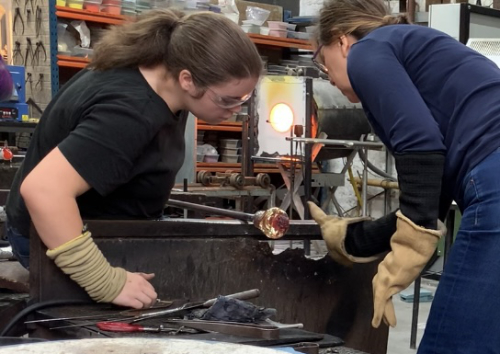
The technical challenge lay in combining cast elements within blown forms, while also attaching them to the outside with the hot glass. This demanded a careful balance; maintaining the fine casting detail while integrating the forms seamlessly into larger works. In many ways, this tension defined the project. I found myself constantly negotiating between control and risk, holding on to intricate detail while also allowing the glass to take on unexpected sculptural shapes.
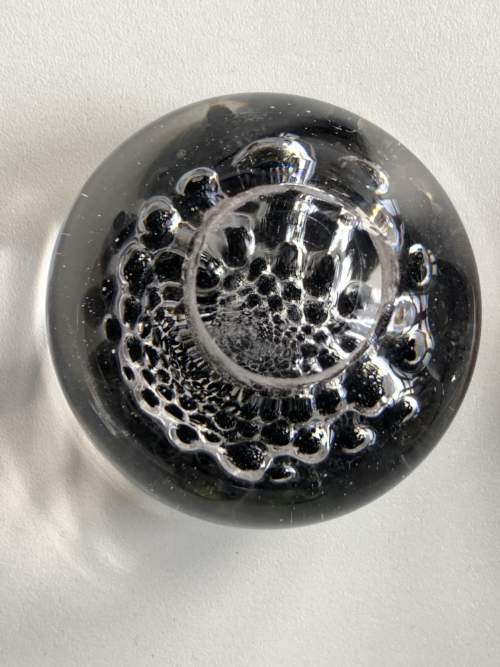
Ultimately, it was this balance that proved most challenging, but also the most rewarding. The residency pushed me to see my practice in new ways, deepening my understanding of both the materials and my own creative process. The combination of processes sparked numerous ideas for me to explore.
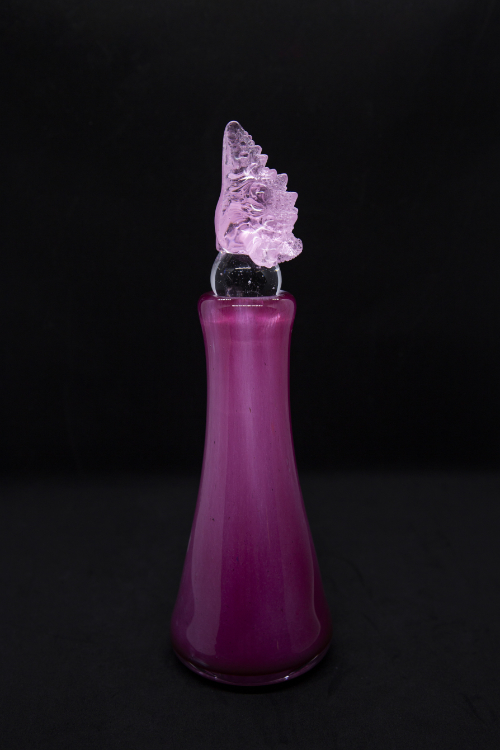
This experience demonstrated that, while glass experimentation is essential, it is equally important to analyse, reflect, and refine one’s creativity.
Main feature image: Maria’s experiments with pâte de verre Romanesco vegetables combined with blown glass. Photo: Natascha C Petersen.